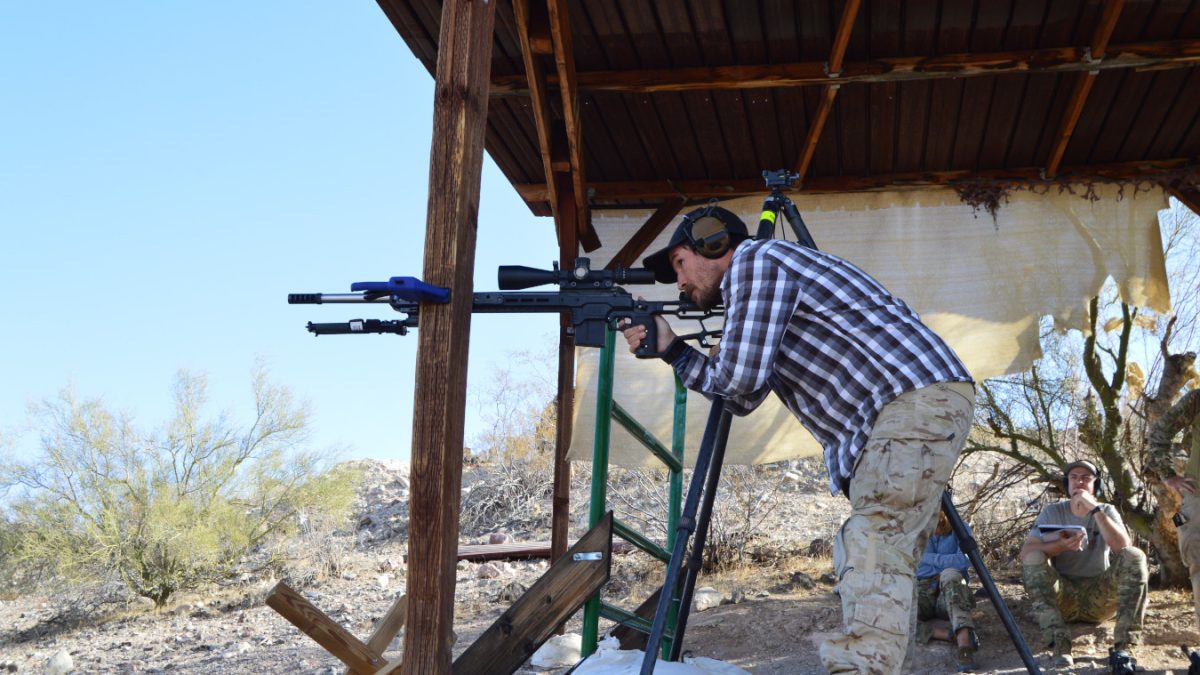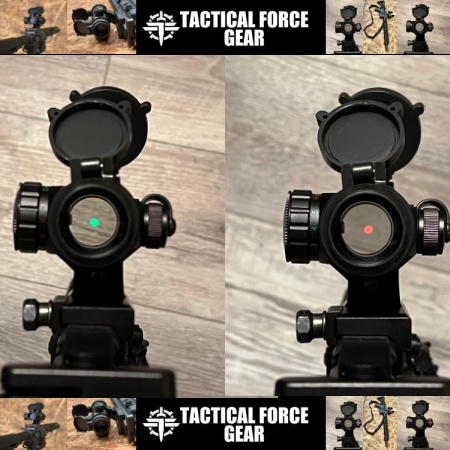Long-range precision shouldn’t be complicated to discuss, yet it often comes down to the individual experience of a student or instructor. Numerous noteworthy developments, such as weather meters, have improved the science of placing rounds on target at a more precise distance.
Yet, relatively few instructors can provide a holistic approach to the complex problem of long-range marksmanship. Travis McCamish and his three-day Comprehensive Precision Rifle course are rare exceptions to that norm.
Travis currently offers a handful of tailored classes in Arizona and other Western states, all focused on his passions. His origin story is wholly unique, beginning with humbly sweeping brass in exchange for ammo and range time, moving to Arizona with a handful of dollars in his pocket with his now wife, and pursuing a passion for shooting professionally.
One of the pivotal moments was his chance meeting with Rob Leatham. Rob saw potential in Travis and took him under his wing, imparting decades of shooting knowledge. Where Travis differs from most of his peers is that he has nothing short of a voracious appetite for learning. His background in wrestling gives him the ability to understand physicality.
At the same time, his experiment-test-refine methodology means when he shows you something or recommends a change, rest assured he’s been through that process himself, likely a multitude of times, to give you the result you seek. All of this culminated with him being chosen as an instructor at the Hat Creek Training facility. Nestled in the rugged mountains of Northeastern Idao, Hat Creek specializes in high-angle practical shooting in mountainous terrain. It is world-renowned for the facility and the cadre, of which Travis was a part.
His 3-day Comprehensive Long Range Precision Rifle course starts with an in-depth understanding of how a Kestrel weather meter with ballistic solver works. That was the latest Kestrel 5700 Elite at the time of this writing. Travis has a simple rule when learning the Kestrel system: at any point, if you get lost, raise your hand, and he will stop to get you back to where you need to be on the device.

This ensures that you don’t get lost in what will be critical information and that everyone is able to read off the same sheet of music by the end of day one. Put on your thinking caps and bring your math skills for day one; it’s nothing short of wildly insightful. Everything about accurately placing rounds on target in the worst of conditions is discussed. From a scientific discussion of how humidity affects bullets to the vaunted Corelolis effect, this is not a class for someone pressing a trigger for the first time.
You will get the most out of it if you’ve short long-range, especially in a professional setting or in competition several times prior. Before the end of day one, Travis will check how you’ve set up your rifle, and you will zero. All of this is done from prone, which Travis will demonstrate how to execute correctly for consistent accuracy.
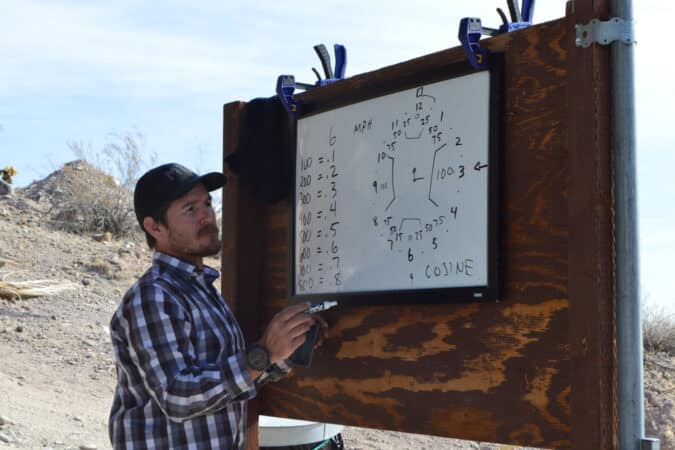
Vital time is spent truing and verifying data; therefore, it’s highly recommended you stick with one rifle for the entire class. You’re going to learn that particular rifle in ways you never imagined.
Day two starts with creating stability through positional shooting, support equipment usage, and manipulation, the waterline method, and the practical usage of a Kestrel to calculate environmentals related to the ballistic solver integrated into the 5700 Elite. This is the practical implementation of what you’ve learned in day one and is where the information “clicks” into practical usage beyond the classroom. With the correct settings and understanding of their function, the Kestrel becomes invaluable for putting precise hits on target.
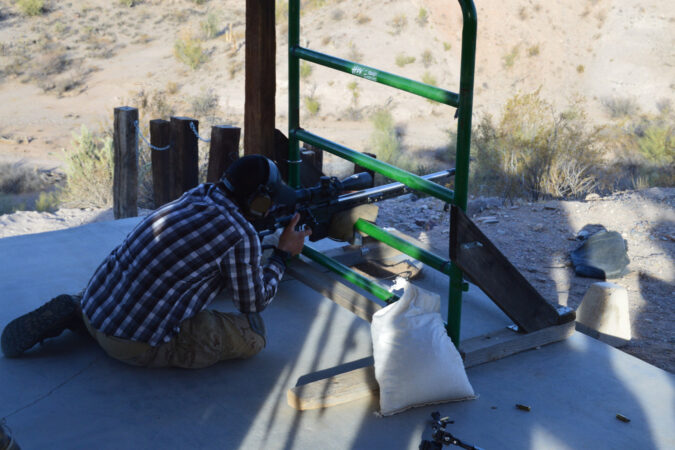
Travis also discusses how vital it is to build a stock-steady shooting position from many positions and orientations.
You’ll gain a deep understanding of how Brokeback, Quasi, and a tripod all come together to create unique shooting positions for your body to minimize or even eliminate the reticle wobble we’ve all become accustomed to just accepting. Travis’ wrestling background shines in his understanding of the human body.
A key component of day two is learning how to communicate with your spotter. Communication can be difficult under normal daily conditions. Now add in a time element, plus having to communicate terrain features in changing environments, and you’ll quickly understand why Travis’ approach works so well to create a picture for both shooter and spotter. The afternoon of day two starts your journey to understand wind and data management such as utilizing an armboard or a data card.
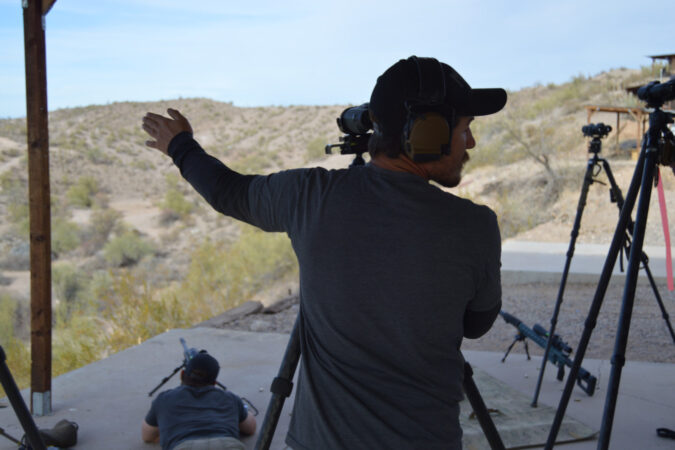
Day three is the one to remember. In days one and two, you become somewhat reliant on the data the Kestrel system feeds you to solve the complex shooting equation. Travis hints throughout the entire course that by the end, you will deeply understand both the Kestrel and how to create shooting solutions in your head without digital tools.
On day three, Travis introduces the concept of Max Point Blank and how it can be coupled with a speed drop calculation to simplify your ability to engage targets rapidly at known distances. This concept is what truly sets the class and Travis apart. His deep understanding through application, competition, and teaching means you will walk away with a paradigm shift of how bullets behave once they leave the barrel of a rifle under certain conditions.
Where day three will stretch you as a student to learn and apply how to put away the digital aides and begin to develop Travis’ concept of being a wind sommelier. Like a sommelier who tastes wine repeatedly to learn its distinctions, Travis teaches doing the same with wind. Like wine, truly understanding wind is a lifelong pursuit that will aid you in shooting and any outdoor activity.
Remember, the idea of a digital Kestrel came from the sailing world. Atmospherics are used in flying, archery, and even wine-making, ironically. The elements from the past two days and day three culminate in a multi-stage match in a practical shooting style focusing on rapid target engagements utilizing equipment and a bevy of practical shooting positions.
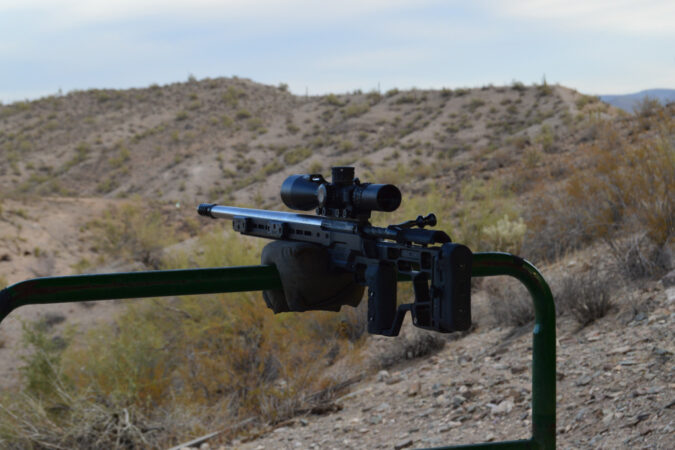
You will have to know how to build stable shooting positions, read wind at multiple distances, use your Kestrel to calculate adjustments to your rifle, see when you do the math in your head to make those adjustments on the fly, identify targets, communicate with your spotter, and spot for your partner.
If you believe that you and your rifle are capable of more, this class is for you. When you realize that you genuinely don’t understand enviornmentals, particularly the wind, and decide it’s time to change that, this is the class for you. Keep an eye out for Travis McCamish classes throughout the Western United States. One class will change the way you see rifle shooting forever.
Read the full article here

